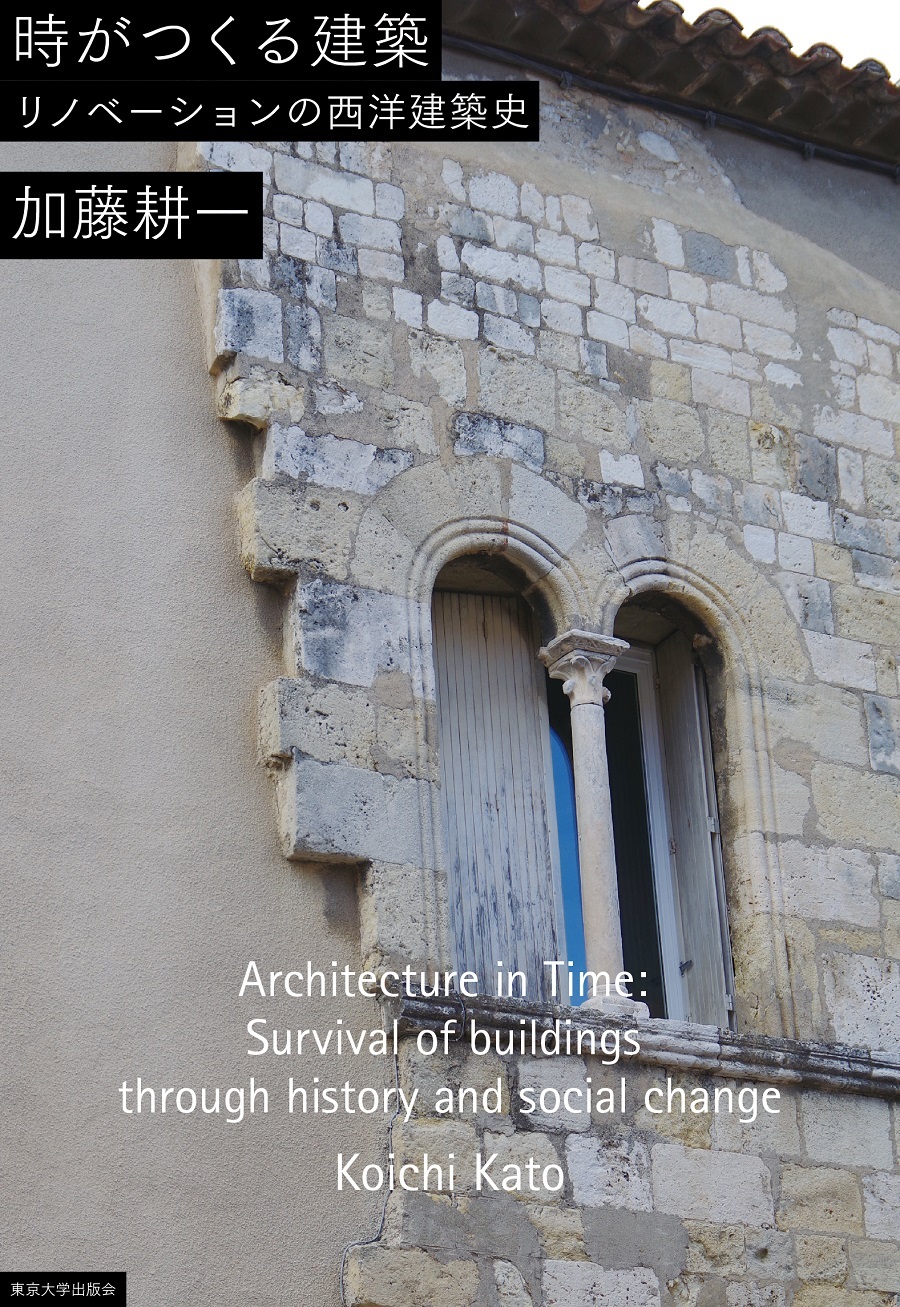
Title
Toki ga tsukuru Kenchiku (Architecture in Time – Survival of Buildings through History and Social Change)
Size
360 pages, 127x188mm
Language
Japanese
Released
April 25, 2017
ISBN
978-4-13-061135-0
Published by
University of Tokyo Press
Book Info
See Book Availability at Library
Japanese Page
Studies in architectural history are becoming progressively deeper and more specialized, with a long list of works developed by previous scholars. While this phenomenon demonstrates the improvement and maturity of the discipline, the outcomes of extremely detailed architectural history studies are becoming harder to observe. The preservation and use of buildings and archives are often considered the only common ground between architectural history studies and society.
In this context, Western architectural history is generally considered to be far removed from modern Japanese society. The starting point of this book is to show the raison d’etre of Western architectural history.
The book splits attitudes toward architecture into three categories based on perspectives of time: redevelopment (resetting time), restoration/preservation (rewinding or stopping time), and reuse (moving time forward). This trio is a response to 20th-century discussions’ lopsided tendency of two choices: redevelopment (new construction) or restoration/preservation (cultural assets). Formulating a new axis of “reuse” enables a discussion on the histories of “architectural design” and “architectural preservation” as a connected overview of history.
Until now, architectural history has essentially been the history of new construction. Textbook descriptions of architectural history always tend to list works by their year of completion. That is, architectural history has been a catalog of eras, lined up in the order of their year of completion. Such methodology of existing architectural history is “point-based architectural history,” whereas the methodology of this book, which focuses on the long periods of time in which buildings were constructed, or the changes in time following their construction, is “linear architectural history.”
Another key point of this book is its positioning of the three views of architecture based on the above trichotomy (“reuse,” “redevelopment,” and “cultural asset” views) within a historical framework. These three attitudes toward existing buildings are not only attitudes simply expressed in modern society; they appear within different respective historical stages.
The reuse of existing buildings is an intrinsic architectural act that has been repeated without interruption since the end of antiquity (Chapter 2). However, at the start of the 16th century, an architectural view that tended toward redevelopment appeared. Existing buildings were torn down despite their history or durability that would have allowed for their further use, and entirely different ones were newly constructed (Chapter 3). Furthermore, at the start of the 19th century, the new “cultural asset view of architecture” created a new attitude (stopping time), which differed from both reuse (moving time forward) through continuing to use existing buildings for new purposes after alteration, and from redevelopment (resetting time) through tearing down old buildings and constructing new ones in their places (Chapter 4). With the rise of the cultural asset view of architecture, reuse that presupposed the alteration of buildings began to vanish, because this ideology created an opposition between preservation and demolition. The architecture world’s renovation craze starting in the late 20th century was the revival of the reuse view of architecture, which had faded in the shadow of this binary opposition.
(Written by Koichi Kato, Professor, School of Engineering / 2018)
Related Info
Suntory Prize for Social Science and Humanities (2017)
https://www.suntory.co.jp/sfnd/prize_ssah/detail/201703.html
The Prize of AIJ (Architectural Institute of Japan): Research Theses Division (2018)
https://www.aij.or.jp/eng/prizes/prize/prize18.html
https://www.aij.or.jp/eng/prizes/prize/prize2018/pdf/2_1award_003.pdf
The Prize for Society of Architectural Historians of Japan (2018)
http://www.sahj.org/index.php?lang=jp&snd=5&trd=1



 Find a book
Find a book

